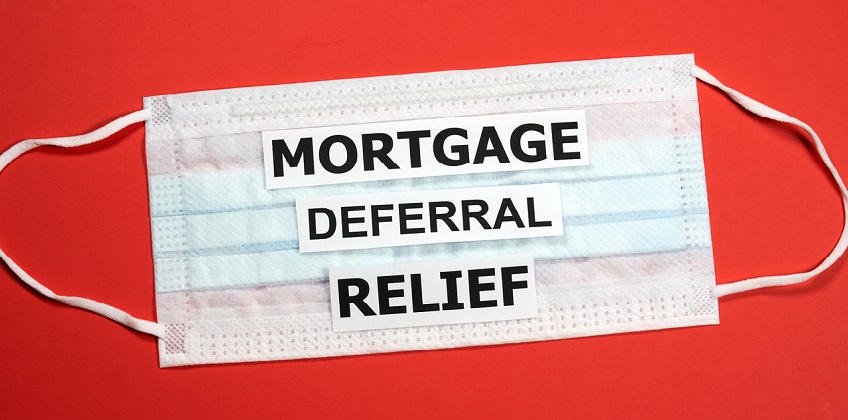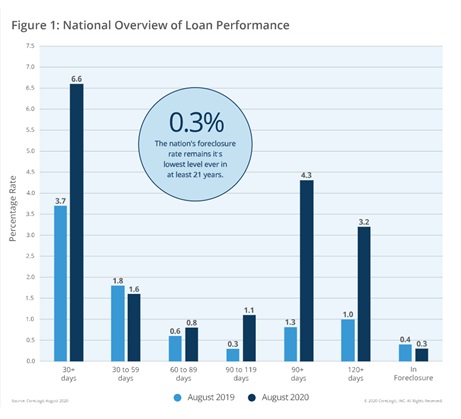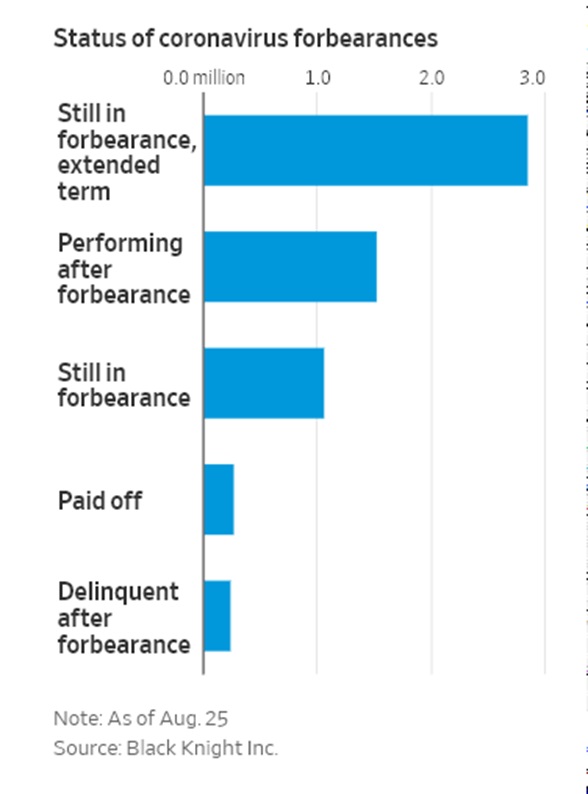As CARES Act mortgage forbearance periods near end, borrowers and mortgage services providers alike ask: What’s next?
According to data from the Mortgage Bankers Association and Black Knight, the number of COVID-19 forbearance plans has declined at an increasing rate in recent weeks. Per Black Knights calculations, 121,000 loans exited forbearance, reflecting a 4% decline over the week prior. Thus far, the month of November has seen a 9% decline or 416,000 loans – currently in forbearance. Across investor classes, private label security (PLS) MBS saw the steepest decline of 7.1%, or 49,000 loans; meanwhile, loans serviced by the GSEs decreased by 4.2%, or 45,000 loans, whereas FHA and VA saw a 2.4% change, or 27,000 fewer loans.[1]
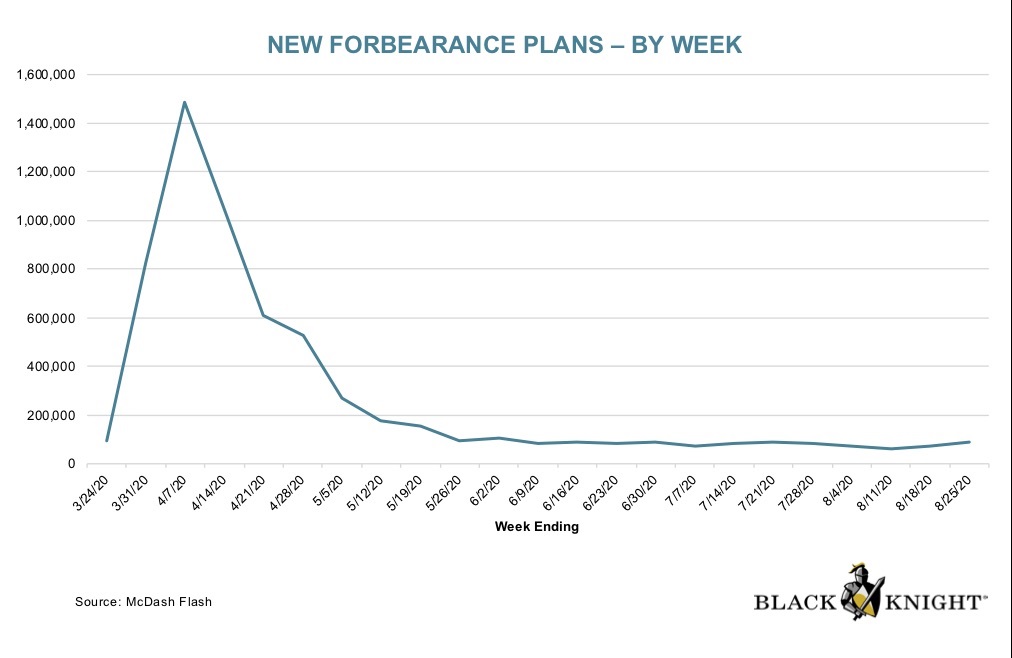
According to the latest publicly available data, as of November 10th, 2.735 million loans remain in forbearance plans, or 5.2% of the 53 million active mortgage loans in servicer portfolios, representing $559 billion of unpaid principal balance. Among these loans, there were: 990,000 GSE loans in forbearance – accounting for 3.5% of Fannie Mae and Freddie Mac’s combined portfolios; 1.099 million or 9.1% of FHA/VA’s portfolio in forbearance plans; and 5% or 646,000 active plans for PLS loans.
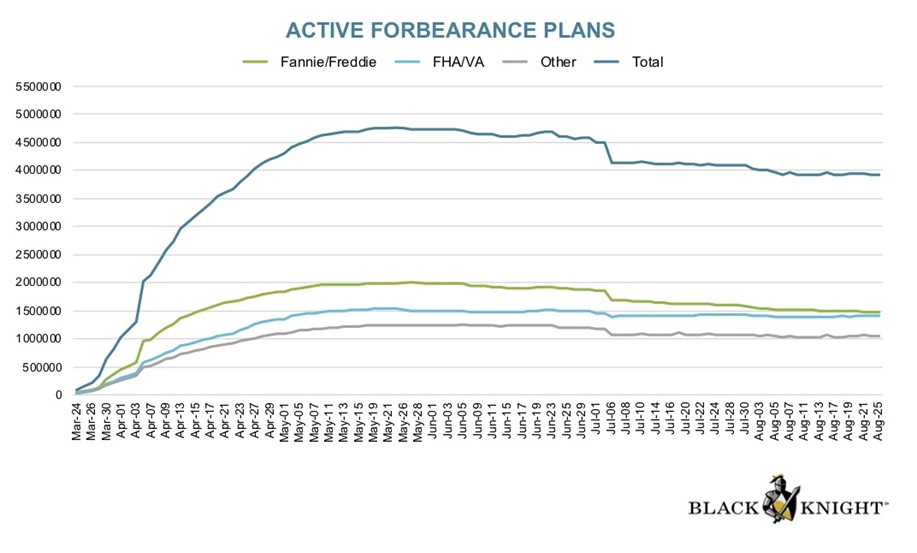
With the passage of the CARES Act on March 27th, any homeowner with a government-backed mortgage who is experiencing financial hardship due to the impact of the pandemic may temporarily suspend payments. As legislated, the protections offered to these borrowers include the right to request forbearance of up to 180 days; the right to request an extension for another 180 days; no additional fees, penalties or interest can be added to the mortgage account during this period, though regular interest will still accrue; and finally, if the borrower was current on their mortgage payments when the forbearance is granted, the servicer is required to report the account status during the forbearance period to the Credit Reporting Agencies.[2]
However, there are numerous delinquent borrowers who are not in forbearance plans. Despite Congress’ attempt to provide a safety net to protect borrowers from losing their homes, more than a million people have fallen behind on their payments, accumulating late fees and potentially placing themselves at risk of foreclosure and eviction when federal and local eviction moratoriums expire at the end of the year. Among the 1.06 million borrowers past due by at least 30 days on their mortgages and not in a forbearance program, some 680,000 have federally guaranteed mortgages and qualify for relief under a March law.[3]
Furthermore, the number of past-due mortgages that are not in forbearance is expected to grow – according to some estimates by several million people – as borrowers who opted into a forbearance program in the early stages of the pandemic began reaching the six-month point of their initial plans as of late October.
In order to be provided with the 180-day extension made available to them, homeowners again must communicate with their lenders and ask for it before the initial forbearance period expires. Some 250,000 of the six million borrowers who were in forbearance at one point since the pandemic began are again delinquent on their homes, according to Black Knight.
Issues ranging from poor communication between borrowers and servicers, borrowers’ lack of knowledge of or understanding about the forbearance program, and the incentive for some borrowers who are in a stronger financial position to exit forbearance early will have a significant impact on the mortgage industry well into 2021.
With the ever increasing level of delinquencies, an expected wave of defaults in the coming months (in the absence of potential government extensions on forbearance and other measures), and the uptick in refinancings, loan modifications and originations resulting from the COVID-19 impact on the economy and the U.S. housing market, mortgage market participants must be even more nimble in their operations, staffing solutions, and service offerings as pandemic relief for consumers comes to an end, even as the pandemic itself rages on.
Oakleaf provides a broad array of loan-, security- and portfolio-level risk analytic and management services to investors, GSEs, trustees and servicers. To learn more about your portfolio and how it could be affected in these unprecedented times, contact Maclean Amlalo, Managing Director.
[1] “Forbearance Plans Hit Pandemic Low.” Mortgage News Daily. 13 November, 2020.
[2] “CARES Act Forbearance: Mortgage Impacts.” PR Web, 30 July 2021.
[3] “A Million Mortgage Borrowers Fall Through Covid-19 Safety Net.” The Wall Street Journal, 17 September 2020.
Oakleaf at a Glance
See Who We Are | Meet Our Leadership Team
Join The Oakleaf Team
Join Oakleaf and put your talents and skills to work with our leading financial, banking, and mortgage client organizations.
See The Work We Do
See how we support our clients and their teams in tackling their most complex matters. Or contact us if you want to discuss anything further.

